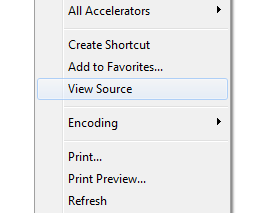HTML Basics
HTML documents are often referred to as Web Pages, are just text documents. Before you start your HTML lessons, few things you need getting on with HTML.
- A Text Editor - Any text editor of your choice but be sure to save the files in ASCII text format (e.g. Notepad)
- A browser - Web browser is a software application specifically for the purpose of reading HTML instructions and displaying the resulting Web page (e.g. Microsoft Internet Explorer, Google Chrome , Mozilla Firefox etc..)
- A storage device - A storage device need to store your HTML files (e.g. A webserver or you can store it in your local disk too ).
Creating HTML files
HTML files are plain text files and it can be create in any text editor of your choice, but be sure to save the files in ASCII (plain) text format. e.g. You can write your HTML contents in a Notepad and save it to your disk along with .htm or .html extension. There is no difference in HTM or HTML extension. All web browsers and servers will treat a file with an HTM extension exactly as it would a file with an HTML extension, and vice versa.
Viewing HTML files
You need a standard HTML browser to view your HTML page. A web browser is a software application specifically for the purpose of reading HTML instructions and displaying the resulting Web page. If you save your HTML page on your local disk you can view it by double clicking the HTML file or select the menu File-Open from you browser. If you upload your HTML page to a webserver you should type the URL (Uniform resource locator ) of the webpage in your browser.
View HTML Source Code
You can view the source code of any webpage that you are viewing . It is a good way to learn is to look at how other people have coded their html pages. In order to viewing a web page source code, Right click on your html page and select the menu View->Source on your browser.

Operating system compatibility
Any HTML file that you create on a Windows computer works equally well on any other operating system and vice versa.